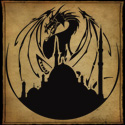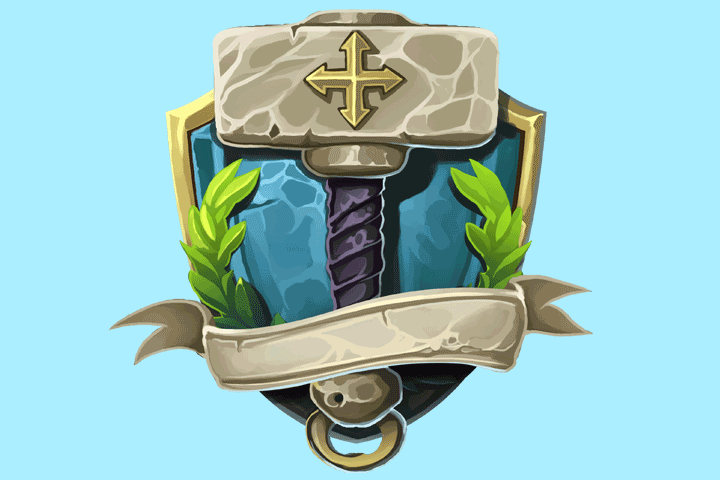The Naartok, Ice Giants, are to be feared and respected Kangel. This is their land, and here they are king. The wolves bow to them, the white bears give them passage and even the Nikpartok, the white worms, pay them respect. You would do well to heed the wisdom of the wolves
Naaht, Atarian Snow-Guide
Full Description
The Ice Giants have beeen described in grandiose terms, giants made of ice, men with the musculature of bulls and the stern demeanor of winter storms, to the white skinned giants who have rime-frosted beards and live only for the endless winter of the north and the fury of battle. The truth is certainly quite different than the bards of the southlands would expect, though no less formidable.
The Naartok, as the local folk of Atar call the Ice Giants, are river dwellers. Each is a massive mammal, easily surpassing five to eight tons in weight and covered in a dense coat of oily hair. Under this dense hair is a thick hide that in turn covers an insulating layer of blubber nearly a foot thick. This gives the Naartok both it's name, as naartok equates out to obese, or fat one, as well as a nearly inpenetrable defence.
The head of an Ice Giant distantly resembles that of a pig, as it has a pronounced snout, small ears and anywhere from two to six thick tusks sticking up from it's jaw. The eyes are quite small, and the Naartoks are known for their poor eyesight. They are also known for their superior sense of smell, notorious bad temper, and their avid dislike of anything human.
Additional Information
Living the hyperborean north, the Naartok are woolly hippopotami. Using their mass they break the rive ice and actually help the local ecology by keeping the larger rivers open and flowing. Quite a bit larger than terrestrial hippos, these giants feed primarily on water plants, fish and foraging from riverfront plant life. If a winter does get too deep and fierce, they will persue living prey but this is rare as the fat reserves that the Naartok builds up over the summer can sustain it for more than a month without food of any sort.
As an apex herbivore, the only things that normally preys on the Naartok are the boldest of worg packs, and these only go for sick or injured specimens. The Atarian locals will hunt the rare Naartok if their shamen guide them to do so, or if one of the giants threatens a community than cannot easily relocate. The Nikpartok, or the White Dragons, are the only creature that can make a habit of hunting Naartok for regular sustainence, but it is worth noting that only mature adult dragons will attempt this feet as the Naartok is adept at defending itself and its tusks can gravely wound a younger and less experienced dragon.
Ambushed!
The main mode of Naartok attack is the ambush, as most of the time, the giant will be found in the water, it's white fur hiding it like so mush slush and ice floating on the surface. Anyone entering it's territory that isnt a Naartok of the opposite gender will cause the giant to become aggresive. Rather than simply charging out of the water, it will watch and determine how to put the foe at the greatest disadvantage. When facing humans, a Naartok will attack and push the humans into the water if it can, where most humans will quickly succumb to near freezing temperatures in mere minutes.
Plot Hooks
I want a hippopotamus for Christmas, only a hippopotamus will do!
naartok, n - obese, native term for ice giants
Kangel, adj, n - Foolish, Fool
Nikpartok, n - white dragon
Worg, n - dire wolf native to tundra regions
Not Registered Yet? No problem.
Do you want Strolenati super powers? Registering. That's how you get super powers! These are just a couple powers you receive with more to come as you participate.
- Upvote and give XP to encourage useful comments.
- Work on submissions in private or flag them for assistance.
- Earn XP and gain levels that give you more site abilities (super powers).
- You should register. All your friends are doing it!
? Responses (13)
These are really cool!
Wooly hippos - Yikes! These things can make hash out of polar bears. That would be a desparate Worg pack that took on even a sick/wounded one.
I assume that like real hippos, they are highly territorial during mating seasons, and that injuries during courtship battles would be the biggest help for the worg packs?
Maybe the Princess wants a baby Narrtok? And the PCs must try and seperate a baby from it's parents.
Truly an odd creature that makes perfect sense with the odd quirks one expects of real beasts.
Nicely writted, good detail, and it has some hooks to go with it. Two paws up, and a tail.
What a pretty beastie to meet in cold lands, and tell legends of - if you survive that is.
Nicely explored ecology. Since they are said to be the kin of tropical hippopotami, there can be assumed another species linking the two, one living in the temperate zone - or did it already die out? Monster-biologists want to know. :)
I guess the best explanation would be that the tropical and arctic hippos shared a common more temperate ancestor, likely a smaller herbivore much like a pig. While one branch headed south and became the traditional hippos, the other branch moved north and became the hippo equivalent to a woolly mammoth. The common link between the two has since gone extinct due to variations in the ecosystem and natural selection.

Or (heavy conjecture here), it might still live as that unassuming pig-like animal, that likes the water more than common swine.
What importance would it have? Little, but maybe the common link can be translated into knowledge. Let's say that the small creature is partial to a certain plant, with which it can be lured into captivity. Or it is susceptible to a certain poison which its hunters commonly use. Both of the options can help with the beast dramatically.
Really good; I love these realistic animal posts.
It's big, it's ugly, and it will stomp you into the ground if you're not careful. I like it.
This is the kind of thing I love
mummy... I'm scared of the hyperborean regions now.
great! flavorful, detailed, and like Iain, I love the pseudo-realistic fauna!
Also, Scras, nice explanation in comment section. Makes sense to me!
Very descriptive, definitely something I want to use in my own campaign.
Hungry Siberian Hippos, fun and well fleshed out.....
for every extraplanar uber beast we should have ten of these quasi-mundane but developed creatures that suggests to the characters that the fantasy world is more than just string of encounters, singular forces (light, darkness, evil, nothingness etc) and quest items, but a deep and complex world.
